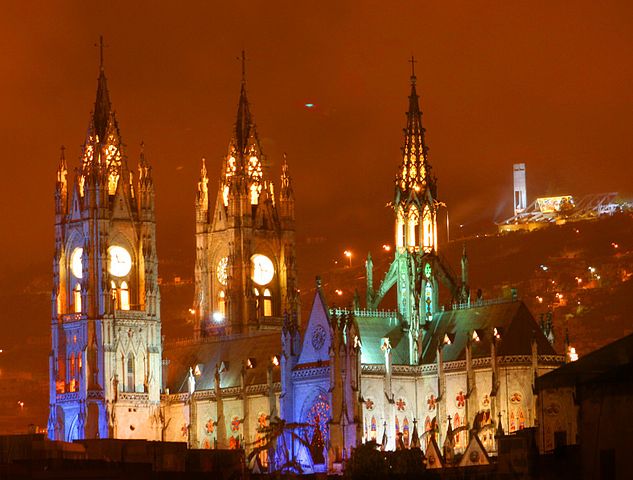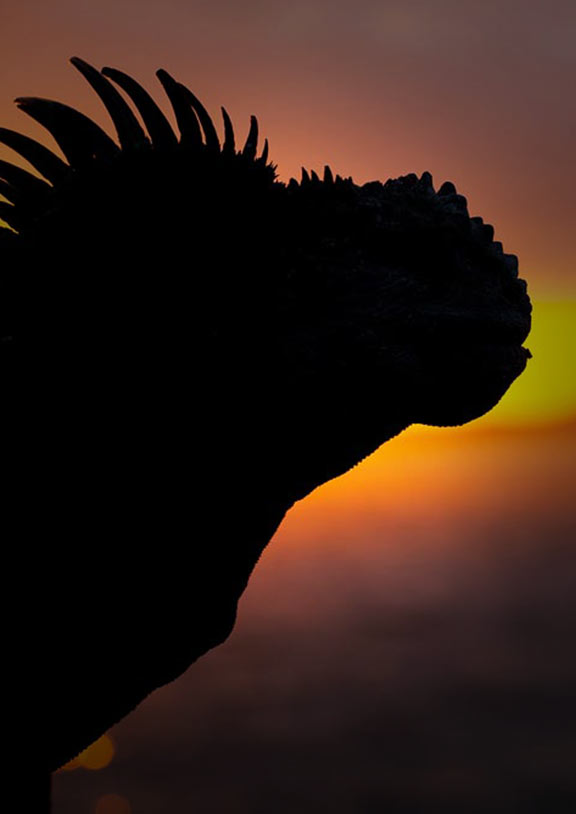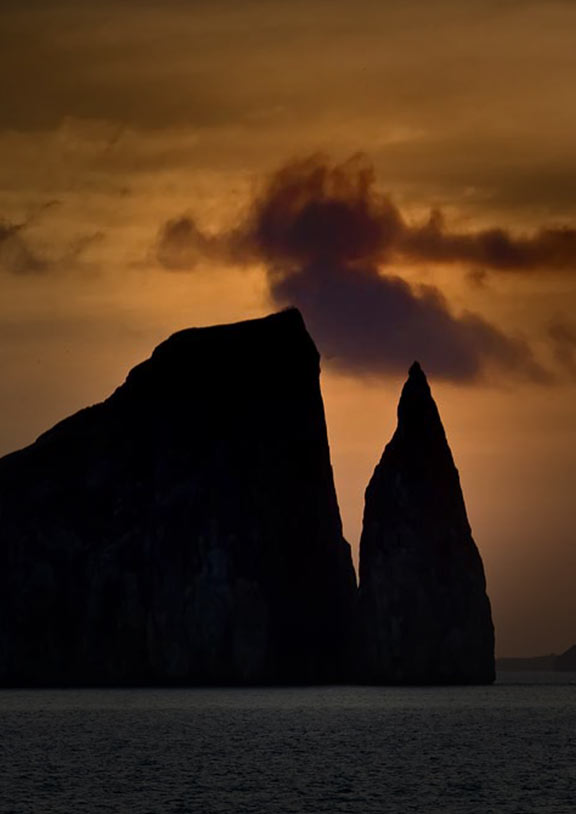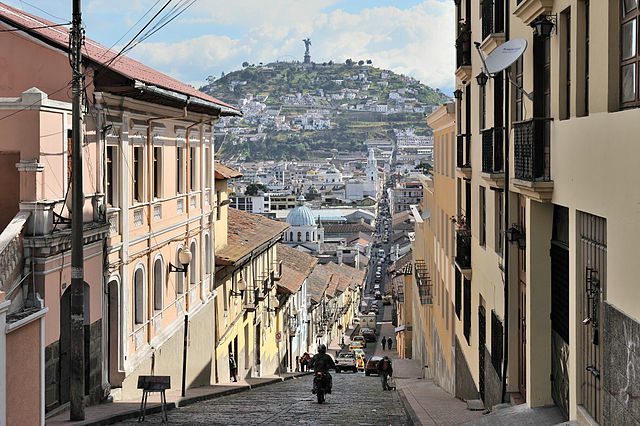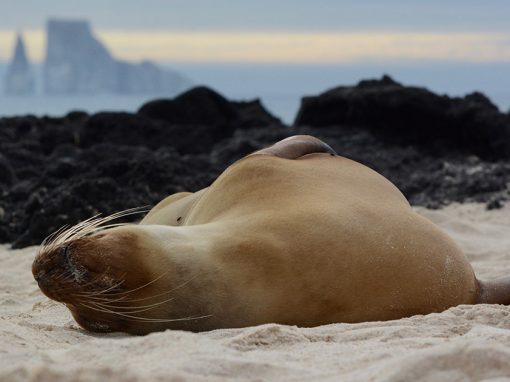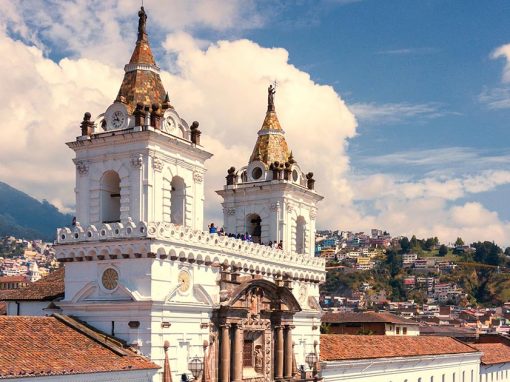Today, we travel to Ecuador to shine a spotlight on the historic wonders of Quito. Visitors to Quito will find a city that is modern, multifaceted, and energetic, but the city’s role in the history of South America is simply fascinating. Quito’s historical richness is such that UNESCO inscribed the city as one of the first ever World Heritage Sites in 1978, declaring Quito as the “best-preserved, least-altered historic center in Latin America.”
Although UNESCO’s designation is in acknowledgement of the city built by Spanish settlers and their descendants in the 16th through the 18th centuries, Quito’s pre-Columbian history is also a huge shaping factor. Before the Spanish arrived, Quito was the second capital (after Cusco) of the Inca Empire, and before that it was the capital of the Shyris or Quitu culture. The historical record is not conclusive, but evidence suggests that the Inca Emperor Huayna Capac was born in Ecuadorian territory and that his son, Atahualpa – the last emperor before the arrival of the Spanish – may have been born in Quito.
In 1534, a cavalry of Spanish conquistadors led by the captain Sebastián de Benalcazar rode into Quito expecting to find a city of gold (Atahualpa’s fabled treasure), but they encountered instead a city in ashes. Hearing of Atahualpa’s capture by conquistador Francisco Pizarro, the Inca general Rumiñahui had ordered his warriors to burn Quito to the ground. Undeterred in their zeal for colonization, the Spaniards founded San Francisco de Quito on December 6, 1534, upon the ruins of the Inca city.
Based on access to mineral resources, the development of a huge textile industry, and a strategic geographic position, Quito went on to become a fabulously wealthy city. The city elite used their profits to build mansions, grand churches, and even grander administrative palaces. Today, these monumental buildings are the most impressive features of the historic center of Quito, all arrayed around the main square, Plaza Grande, and the surrounding streets.
The city’s historic churches are a definite highlight of a Quito tour. The Jesuit Church, called Iglesia de la Compañía de Jesús, was built of volcanic gray stone between the years 1605 to 1765. The drab color of the façade is considered a fine example of baroque architecture and gives entrance to the visual delight of a richly gilded interior. The long central nave is roofed with intricately detailed wood carvings and Mudéjar figures in gold leaf, culminating in a golden altar considered to be the greatest work of the Quito School of Art.
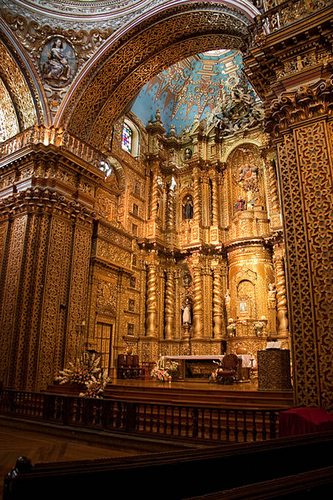
The Church of the Society of Jesus is one of the most visually thrilling church interiors in South America.
San Francisco Church is another of Quito’s jewels. Construction for the church and monastery began in 1534, on the same site where the palace of Atahualpa lay in ruins. A wood carving of the Virgen de Quito, also known as the “Winged Virgin” and the “Dancing Virgin,” is the artistic centerpiece of the church. In an unusual depiction of the Madonna figure, the mestizo sculptor Bernardo de Legardia added wings to the figure and its flowing robes and upturned hands create a sensation of movement.
Another notable construction in the historic center is the massive presidential palace called Palacio de Carondelet, which is the seat of government in Ecuador and currently also functions as a museum. Construction of the first version of the palace began in 1570. Simon Bolivar resided here for brief periods of time during his campaign of independence from the Spanish Empire. The treasures of Quito’s historic center are thus hugely symbolic and deeply intertwined with stories of Ecuador and South America’s most influential characters and events.
As mentioned above, Quito as a city goes well beyond the historical. In and around the neighborhood of Mariscal Sucre (La Mariscal), modern Quito is equipped with parks, museums, shopping malls, and myriad attractions like the Teleferico cable car which transports visitors to a restaurant and park complex on the 4,000 meter slopes of the towering Pichincha Volcano. For its wealth of offerings, old and new, Quito is one of South America’s most exciting cities, fast outgrowing its status as a mere stopover prior to a Galapagos vacation launch. The city of Quito’s information website is a great resource for travelers planning an Ecuador vacation in Quito.
Latin America For Less provides comprehensive packages for travel to the Galapagos Islands, Quito, Guayaquil, and other destinations. Contact us to start planning your dream South America vacation.
Anabel has been exploring the length and width of South America since 2010. Ditching preconceptions, settling into the local pace, and embracing the unexpected are the tenets of her philosophy of travel – and life.

